Variety of Hungarian Bianca grapes in honor with gardeners of the southern regions of Russia and the CIS countries. Technical grape the grade is appreciated for excellent taste, stable productivity. High-quality wines, strong drinks (cognac, grappa) are obtained from berries.
Unpretentious grape successfully bears fruit in most Russian regions. As the reviews and description show, he needs standard care without any difficulties. Beginning summer residents without any problems grow a Bianca variety on their site.
Content
Grade description
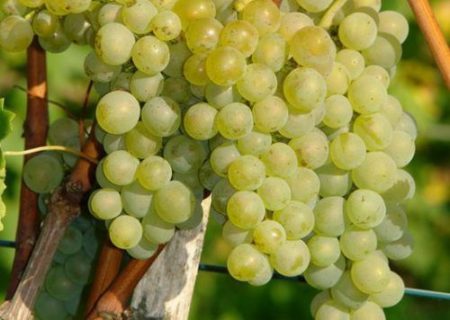
Grapes received by Hungarian breeders, the parent couple - Chasla Bouvier and the famous sweet Villars Blanc. Bushes of medium vigor, with dense shoots. Aging - 90-100%.
It differs in the quick rooting of cuttings, the active growth of a young vine. Leaves with five pronounced lobes, dark green color. The appearance of the bushes is very decorative, so Bianca is used to design sites.
Harvest is ready for harvest in 120 days (an early type of crop). In the southern regions, berries are picked in early August. After planting, the first brushes appear in the third year. On the shoot - 2-3 inflorescences.
Grade frost resistant, maintains the lowered temperatures to -27ºC. This allows you to grow Bianca in regions with short summers and harsh climatic conditions. But mainly technical species are cultivated in the south. Due to good growth, the vine after freezing quickly recovers.
Using:
- cooking table wines, dessert wines;
- production of vodka;
- manufacture of cognacs of various aging and strength.
Wine experts note the pleasant taste of wine drinks from Bianchi berries.
Grapes of this species are resistant to pests; at the genetic level, the resistance gene is laid. This makes it possible to minimize the processing of vineyards with chemicals, to obtain an environmentally friendly product.
Fruit characterization
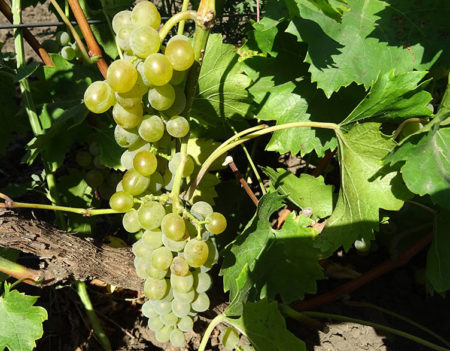
By August, small, conical-shaped clusters form on the bushes. With proper care grow up to 170-200 grams. The grapes are round, weighing 2-2.5 grams. Color - greenish, as the skin ripens, it acquires warm amber tones.
The pulp contains a large amount of water, the sugar level is 28%. Inside there are usually 2-3 seeds. The skin is thin but strong.
The acidity is above average - 7%, so experienced growers prefer to overexposure the berries on the vine. Two or three weeks are enough for the fruits to gain sweets, acidity has decreased. The alcohol content is 14% (high).
Productivity - 180-200 kg per hectare. Fruiting vines - 80-85%.
Advantages and disadvantages of the variety
Bianca is on the list of the best wine varieties, recommended for growing in industrial volumes.
Benefits:
- early harvest;
- disease resistance;
- stable yields in regions with different climatic conditions;
- high content of sugars, alcohols, moderate acidity;
- successful survival on a stock;
- keeps on bushes for a long time, does not fall;
- responds well to molding.
The use of berries is universal, although they are more used as raw materials in winemaking.
disadvantages:
- protection against wasps and birds is required;
- due to the small size of the bunches, manual harvesting is difficult;
- the bushes need to be rated.
The disadvantages are offset by the excellent taste of berries and the simplicity of caring for the vineyard.
Grape planting
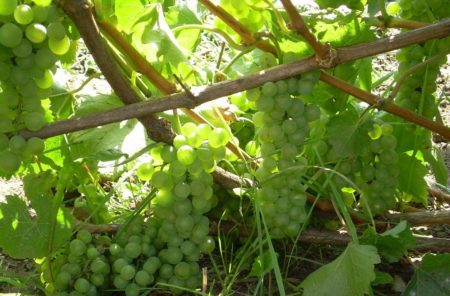
The culture is grown in one place for a long time, so choose a suitable site in advance. The place should be sunny, protected from the winds. In regions with a short summer season, the best places on the south side are selected for the vineyard.
It is advisable to have slightly acidic or neutral soils in the area. Acidic soils ennoble the introduction of chalk, dolomite flour, lime. On sandstones make humus or rotted mullein. Such additives improve the structure and moisture permeability of the soil.
Time landing determined based on the climatic conditions of the region. With spring planting of seedlings, the best time is the end of March or the first half of April (weather permitting). In autumn, Bianca is planted in early October. The soil should be warmed up to + 10ºC, air - up to + 10ºC ... + 11ºC.
Seedlings are planted in pits, the distance is 70-80 cm. The depth of the pits is not less than 60-80 cm. Mandatory laying of the drainage layer (10-15 cm), nutrient mixture. In advance, a peg is placed in the pits to support the seedling.
Features of agricultural technology
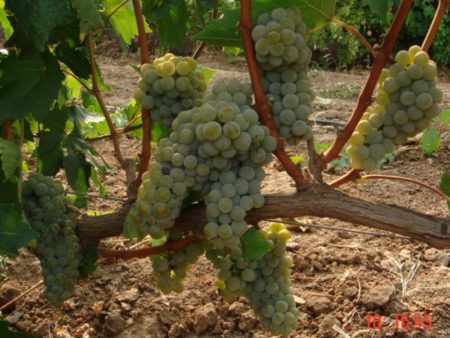
The variety requires standard care. It is enough to observe the basic techniques of agricultural technology, to process plantings from pests in time, and to form bushes.
Watering
Bianca - moisture-loving grapetherefore, do not allow the soil to dry out. Watered into holes or specially dug grooves. In areas of large area, it is recommended to install drip irrigation systems. The norm for an adult bush is 6-7 liters (weather, plant conditions are taken into account). On hot days, water more often, every other day.
Mandatory mulching of the soil, slowing down the evaporation of moisture. For mulch fit:
- straw;
- sawdust;
- foliage.
When using mulch, the soil dries up slowly, weeds do not grow.
In autumn, with a small amount of rain, water-charging irrigation is performed. It will provide moisture to the roots, increase the resistance of shoots to frost.
Top dressing
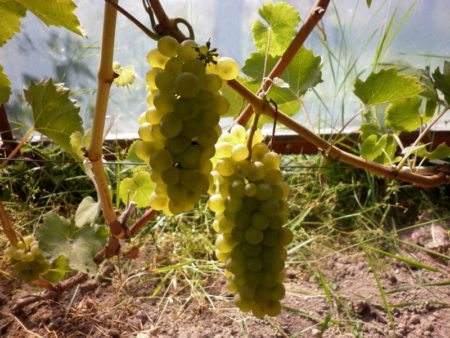
The main fertilizer is added to the pits when planting seedlings. Over the next three years, plantings are not fed.
Adult bushes need regular feeding:
- organic matter (every two years, 4-5 kg per square meter);
- mineral fertilizers (3-4 times per season).
In the spring, before the appearance of flowers on the bushes, they watered Bianca with solutions of urea, potassium salt. The second time they feed, when the grapes have become the size of peas. Reduce the dose of nitrogen additives, increase the rate of phosphate and potassium fertilizers.
During the period when the berries are poured with juice and ripen, it is recommended to feed vineyard potassium salt, superphosphate, ash infusion.
After collecting the fruits, the treatment of the bushes with special compositions with microelements is shown: Polydon Iodine, MicroMix and others.
In cloudy weather, a good effect is given by spraying grapes on leaves with solutions of Master, Novofert, Kemira preparations.
Forming and trimming technical grades
Bianca yields a high yield with dense planting of bushes and pruning according to cupped technology. The method is suitable for the southern regions, pruning is done from the second year by 2-3 eyes.
The formation is carried out over 4-5 years. It is desirable to form compact bowls to reduce the load on the shoots. The height of the stem is 80-100 cm (if cultivated without trellis). Also practiced growing on a simplified trellis with a single wire.
Autumn pruning is carried out on mature shoots, before sheltering the vines for wintering in a trench. The main work is put off in the spring, cutting bushes before the buds open.
In addition to removing weak, fattening vines, old sleeves are removed, the necessary load on the bushes is normalized.
Disease Prevention and Pest Control
A variety of Hungarian selection is resistant to various diseases of grapes. The immunity of Bianchi to mildew, oidium is noted by gardeners from different regions.
But this technical grape in some years affected by alternariosis. Bianca is threatened by one of the varieties of infection - Tenuissima disease (brown rot on the leaves). Preventive treatment with drugs is required:
- Speed;
- Ridomil;
- Cabrio Top.
The traditional remedy - Bordeaux liquid also helps. Processing is carried out when 2-3 leaves are revealed on the bushes.
The variety is not susceptible to insect attacks, even a dangerous phylloxera is not a threat to this grape. The real disaster is wasps and birds, annoying the owners of vineyards in late summer.
To combat birds use protective nets, covers, covering materials. Ultrasound devices that repel flocks of birds also help.
To protect against wasps, a set of measures is needed:
- extermination of wasp nests in the area;
- the use of smoke bombs;
- device traps from plastic bottles;
- bait with sugar near the grape plantings.
To protect the bushes, a thin non-woven material is suitable. The use of any one method is ineffective; a well-thought-out and comprehensive protection of the vineyard is required.
Harvest grapes of Bianca do not produce beautiful and massive clusters, like table varieties of culture. But on the other hand, it is unpretentious, hardy, and the berries are distinguished by a high sugar content and juiciness. Such raw materials make excellent wines, cognacs.
Reviews
Alena, Tver
I call this grape a persistent tin soldier. Failsafe, gives berries in any year. Not as good looking as, for example, Crystal, but the wine is tasty. I take it off and dispense it in a drawer, sugar content increased by almost 3% in 8 days. Unfortunately, the berries ripen a little late for our region, and so - a good variety!
Vladimir, Stary Oskol
Bianca wrote out from friends. The sixth year is growing. From the bush I collect a bucket (9 liters). Bushes over an area of about three meters. Little stepsons, the vine ripens perfectly. In the first two years, the whole crop was eaten by blackbirds. This year, near the brushes, he removed leaves before flowering. Pollination went great. Sugar in the berry - 21 BRI. The taste is excellent, but I grow it specifically for wine. I want to plant another three bushes.

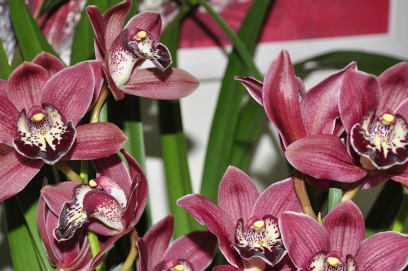
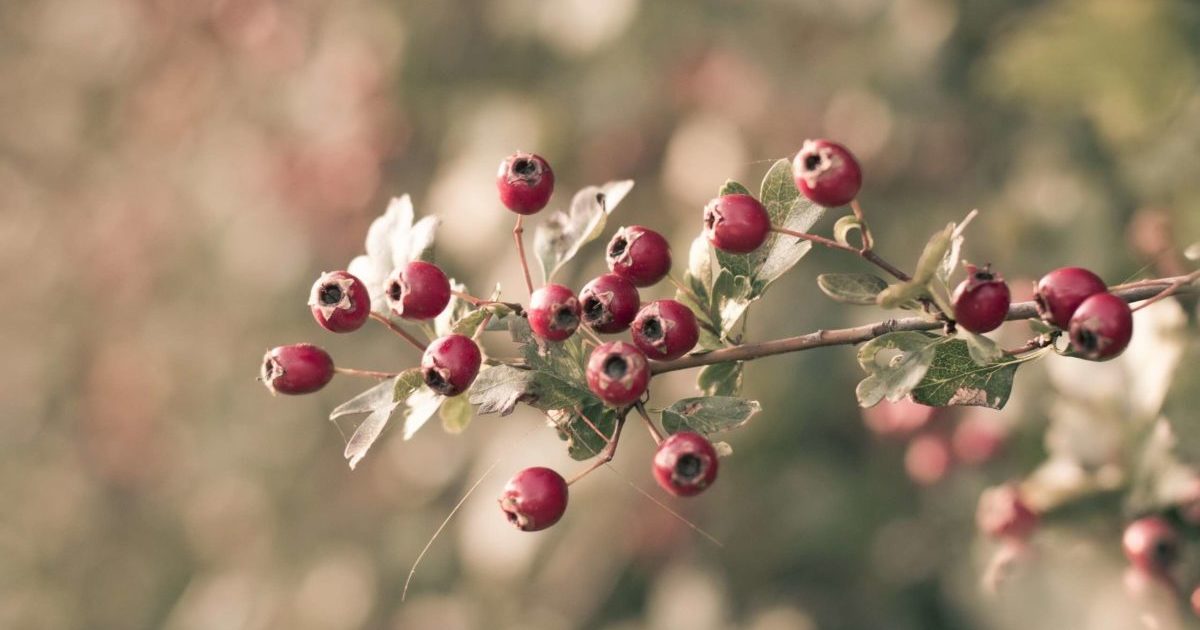

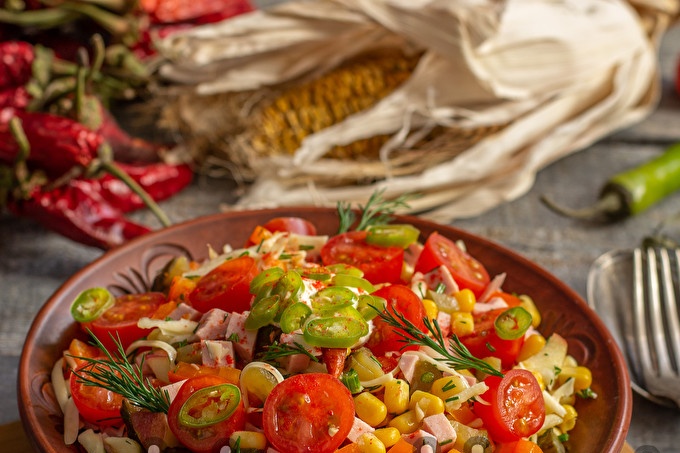 Mexico salad - no need to cook
Mexico salad - no need to cook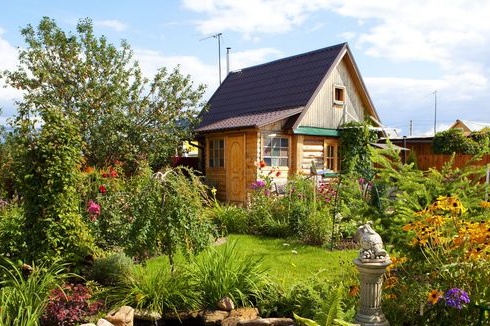 Garden tax for summer residents from 2019 in Russia
Garden tax for summer residents from 2019 in Russia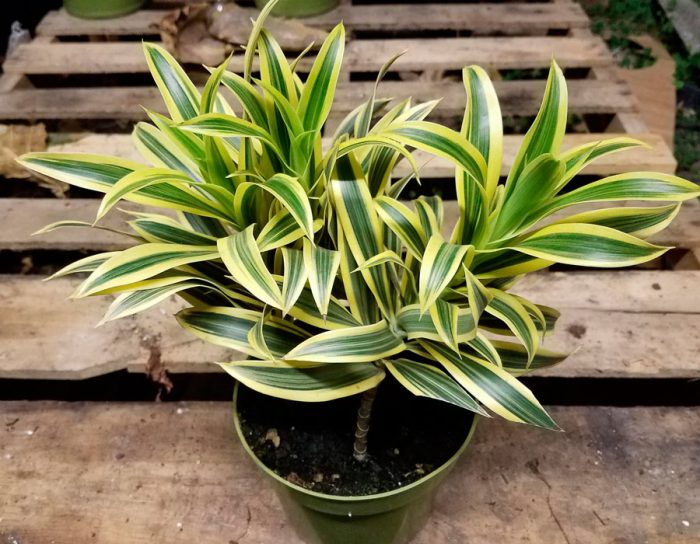 Dracaena: home care, transplantation and reproduction, photo
Dracaena: home care, transplantation and reproduction, photo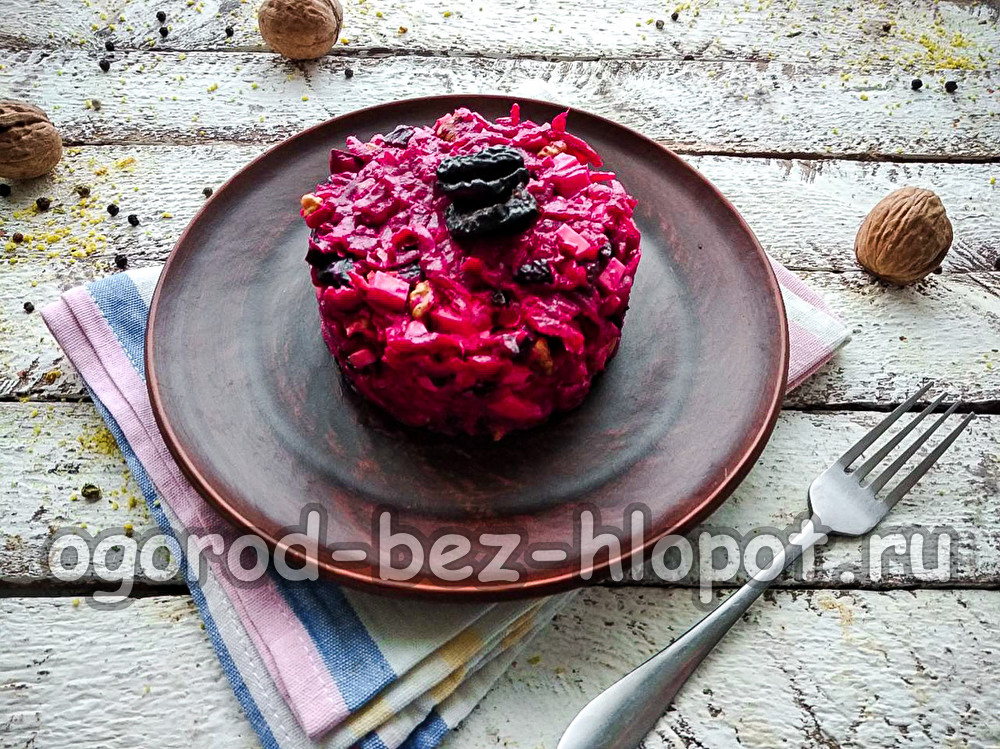 Beetroot salad with prunes, walnuts and hard cheese
Beetroot salad with prunes, walnuts and hard cheese